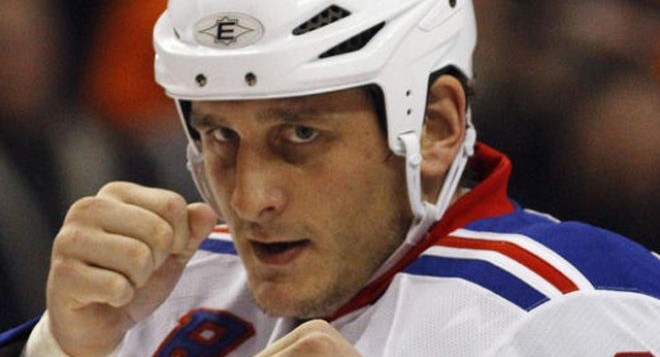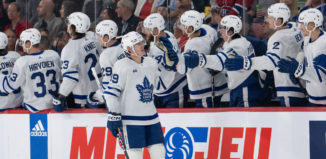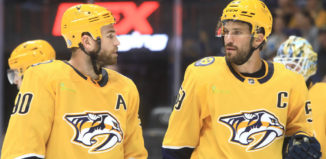Physicality and Hockey; Would Eliminating Elements Alter the Game?
By Katie Joly
The recent lawsuit filed by the family of former New York Rangers enforcer, Derek Boogaard, has added more scrutiny to an already sensitive subject for the National Hockey League. Is the game too physical?
Boogaard, passed away in May 2011 of an accidental overdose. After his death, his brain was studied by the Boston University Center for the Study of Traumatic Encephalopathy. It was determined that Boogaard’s brain suffered from C.T.E. or chronic traumatic encephalopathy which according to the Boston University’s Center for the Study of Traumatic Encephalopathy is:
“A progressive degenerative disease of the brain found in athletes (and others) with a history of repetitive brain trauma, including symptomatic concussions as well as asymptomatic subconcussive hits to the head… These changes in the brain can begin months, years, or even decades after the last brain trauma or end of active athletic involvement. The brain degeneration is associated with memory loss, confusion, impaired judgment, impulse control problems, aggression, depression, and, eventually, progressive dementia”.
C.T.E. has been found or suspected in a number of other athletes including former New England Patriots linebacker, Junior Seau and former New York Rangers defenseman, Reggie Fleming. Researchers have known about C.T.E. in boxers for quite some time, more recently in football, and now hockey has been added to the list. Unfortunately, C.T.E. can only be diagnosed after death which rules out any examinations on current athletes or former athletes who are still alive.
Depending on what you read and where it is coming from, some sources will indicate the C.T.E. is directly linked to repeated blows or hits to the head over a period of time. While others will say there is no conclusive evidence that repeated head trauma and C.T.E. are related. Regardless of where you stand on the issue, it is important to consider the safety and well-being of these people, who are just out there doing their job. These are sons, brothers, fathers, and husbands to some and glorified athletes or jocks to others. That being said, what should, if anything, be done about the issue of physicality in hockey or other sports?
Should the league amend the rules to abolish hits to the head like the Ontario Hockey League or the Olympics? Or should the league leave the rules as they stand and implement a more comprehensive health benefits plan for retired players? Or should the league do nothing at all?
There are many questions to this debate and many people, hockey fans and non-hockey fans, have differing opinions on the physicality of hockey. In my opinion, I believe the NHL and the players would see very little change if they implemented a no-hit to the head rule. It doesn’t mean players can’t hit or check, it just means that they can’t go after the other guy’s head without a consequence.
As for fighting, that is a long-standing element of the game that I fear would alter the game if removed. Many fights break out just to pump the crowd or team up. Though an argument may be, why allow fighting if you’re going to take out head shots? Both are violent acts. However, the biggest difference between fighting and hits to the head is that fighting is performed by two willing players (emphasis on willing) whereas hits to the head often occur when players are vulnerable and not expecting the hit.
Obviously incidents with accidental contact to the head will occur. A player is going in for a check and at the last second the opposition ducks or shifts and the player’s elbow or shoulder gets the opponent in the head. This is the type of situation that would cause the most stir among fans and players: is this a hit to the head or was it accidental? How will officials be trained to call hits that appear to be intentional versus accidental? This is just another question that needs to be answered if the league were to consider a hit to the head rule.
The NHL has yet to do anything in regards to rule amendments, but the next year or two in hockey should be interesting to watch. Watching to see if any rules change or if players, or teams, will see increased fines or suspensions for hits to the head, especially those resulting in injuries. As a fan and a former player, it is difficult to imagine the rules of the game changing much from where they stand today. However, I believe it is more painful to watch a player suffer a season or career-ending injury in the game that we all love so much.














